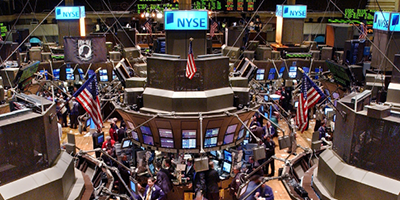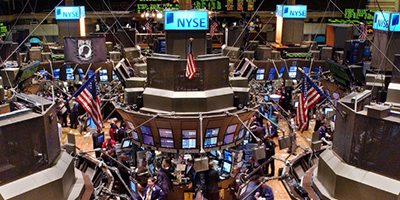Critical Markets
In financial markets, trading an asset induces a perturbation that changes the price of the asset. Traditional economic models assume that price varies linearly with the volume of the trade: small perturbations induce small changes. However real markets can be strongly “nonlinear”: small trades have a disproportionate impact on prices and can sometimes trigger dramatic market responses. Iacopo Mastromatteo and colleagues from Ecole Polytechnique and Capital Fund Management in France, propose a new model that describes markets as interacting particles. The results suggest that markets are “critical,” i.e., behave like a material on the verge of a phase transition, such as a para-to-ferromagnetic transition where the response of the material to a small magnetic field diverges.
The authors model the trading process as a two-particle system where one type of particle represents orders to sell and the other orders to buy. When buy and sell offers meet at the same price level, particles annihilate. The system is constantly in flux with particles entering and leaving the trading process.
Mastromatteo et al., found that as soon as there is a market imbalance—more bids than asks, or vice versa—the market responds, with the price varying as the square root of the trade volume, i.e., much faster than the linear response expected for most systems. Even vanishingly small imbalances switch the behavior from linear to nonlinear—a sign of criticality. The result might explain what can make financial markets behave like turbulent systems.
This research is published in Physical Review Letters.
–Katherine Wright





